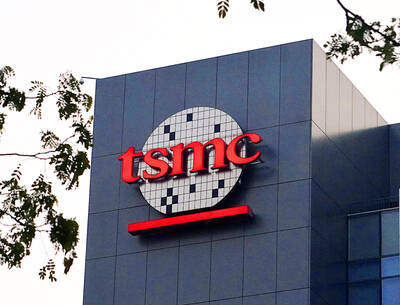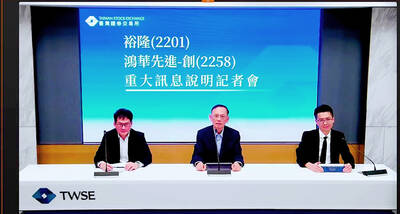China’s central bank has published details on its latest tool to provide liquidity as it refrains from across-the-board cuts to benchmark interest rates.
The People’s Bank of China confirmed it pumped 769.5 billion yuan (US$126 billion) into the nation’s lenders in the past two months through a newly created medium-term lending facility (MLF).
The central bank injected 500 billion yuan in September and 269.5 billion yuan last month via the facility — all termed at three months with an interest rate of 3.5 percent.
The announcement, included in the bank’s quarterly monetary policy statement, is the first official confirmation of earlier reports of the injections.
Goldman Sachs Group Inc said every 500 billion yuan in funds from the central bank is approximately equal to a 50 basis point cut in the required reserve ratio.
The move “affected mid-term interest rates, while providing liquidity to guide commercial banks to lower their lending rates and overall social-financing costs,” the central bank said in the report published yesterday.
“As liquidity generated from capital inflows eases, MLF has played a role of covering the liquidity gap, and maintaining a neutral and appropriate liquidity situation,” the central bank added.
The facility is the latest unconventional liquidity tool as the Chinese central bank joins the European Central Bank on a path of easing, even as the US begins the shift to a more normal monetary policy.
The expansion builds on targeted steps to support growth in Asia’s largest economy, while stopping short of broad-based monetary loosening and fiscal stimulus, that could raise debt risks and the risk of bad loans.
Last year, the central bank introduced the standing lending facility (SLF), a tool similar to the discount window at the US Federal Reserve and the marginal lending facility at the European Central Bank, to provide short-term liquidity to banks.
The Chinese central bank did not use the SLF in the third quarter, with the outstanding value at zero as at the end of September, it said.
China will continue to implement a “prudent” monetary policy and use various tools to manage liquidity, the PBOC said. The central bank has left reserve requirements for the largest banks and benchmark interest rates unchanged for more than two years.

CHIP RACE: Three years of overbroad export controls drove foreign competitors to pursue their own AI chips, and ‘cost US taxpayers billions of dollars,’ Nvidia said China has figured out the US strategy for allowing it to buy Nvidia Corp’s H200s and is rejecting the artificial intelligence (AI) chip in favor of domestically developed semiconductors, White House AI adviser David Sacks said, citing news reports. US President Donald Trump on Monday said that he would allow shipments of Nvidia’s H200 chips to China, part of an administration effort backed by Sacks to challenge Chinese tech champions such as Huawei Technologies Co (華為) by bringing US competition to their home market. On Friday, Sacks signaled that he was uncertain about whether that approach would work. “They’re rejecting our chips,” Sacks

Taiwan’s long-term economic competitiveness will hinge not only on national champions like Taiwan Semiconductor Manufacturing Co. (TSMC, 台積電) but also on the widespread adoption of artificial intelligence (AI) and other emerging technologies, a US-based scholar has said. At a lecture in Taipei on Tuesday, Jeffrey Ding, assistant professor of political science at the George Washington University and author of "Technology and the Rise of Great Powers," argued that historical experience shows that general-purpose technologies (GPTs) — such as electricity, computers and now AI — shape long-term economic advantages through their diffusion across the broader economy. "What really matters is not who pioneers

BUBBLE? Only a handful of companies are seeing rapid revenue growth and higher valuations, and it is not enough to call the AI trend a transformation, an analyst said Artificial intelligence (AI) is entering a more challenging phase next year as companies move beyond experimentation and begin demanding clear financial returns from a technology that has delivered big gains to only a small group of early adopters, PricewaterhouseCoopers (PwC) Taiwan said yesterday. Most organizations have been able to justify AI investments through cost recovery or modest efficiency gains, but few have achieved meaningful revenue growth or long-term competitive advantage, the consultancy said in its 2026 AI Business Predictions report. This growing performance gap is forcing executives to reconsider how AI is deployed across their organizations, it said. “Many companies

TAIWAN VALUE CHAIN: Foxtron is to fully own Luxgen following the transaction and it plans to launch a new electric model, the Foxtron Bria, in Taiwan next year Yulon Motor Co (裕隆汽車) yesterday said that its board of directors approved the disposal of its electric vehicle (EV) unit, Luxgen Motor Co (納智捷汽車), to Foxtron Vehicle Technologies Co (鴻華先進) for NT$787.6 million (US$24.98 million). Foxtron, a half-half joint venture between Yulon affiliate Hua-Chuang Automobile Information Technical Center Co (華創車電) and Hon Hai Precision Industry Co (鴻海精密), expects to wrap up the deal in the first quarter of next year. Foxtron would fully own Luxgen following the transaction, including five car distributing companies, outlets and all employees. The deal is subject to the approval of the Fair Trade Commission, Foxtron said. “Foxtron will be